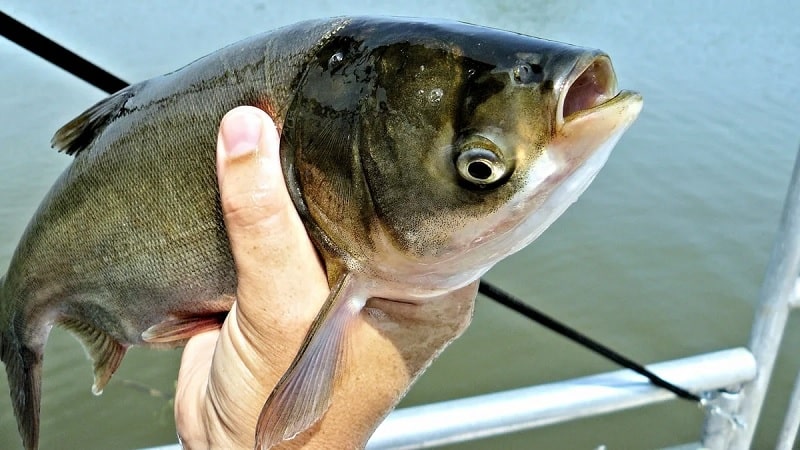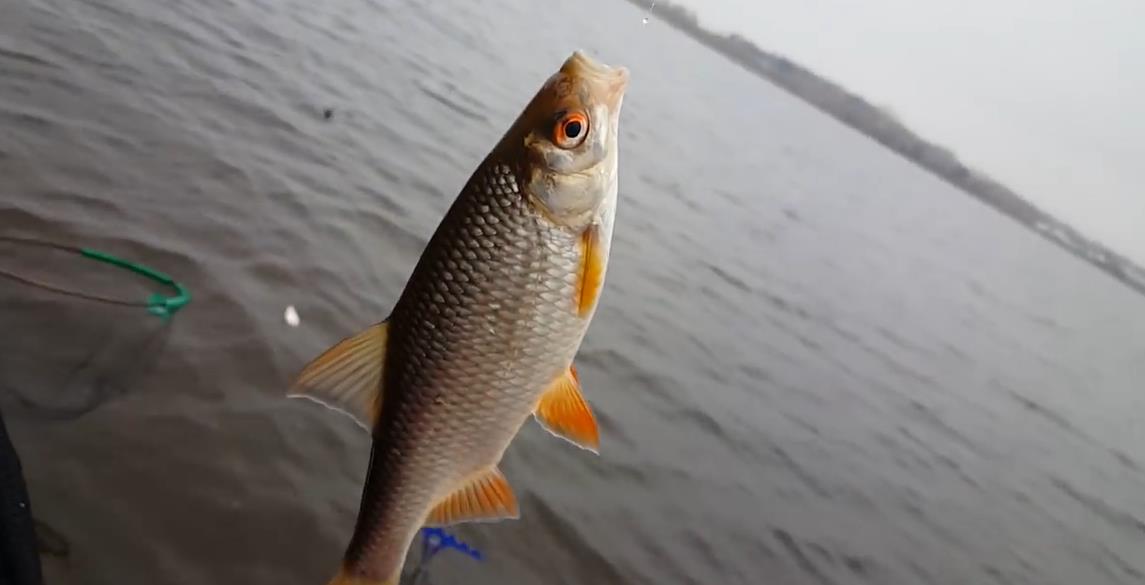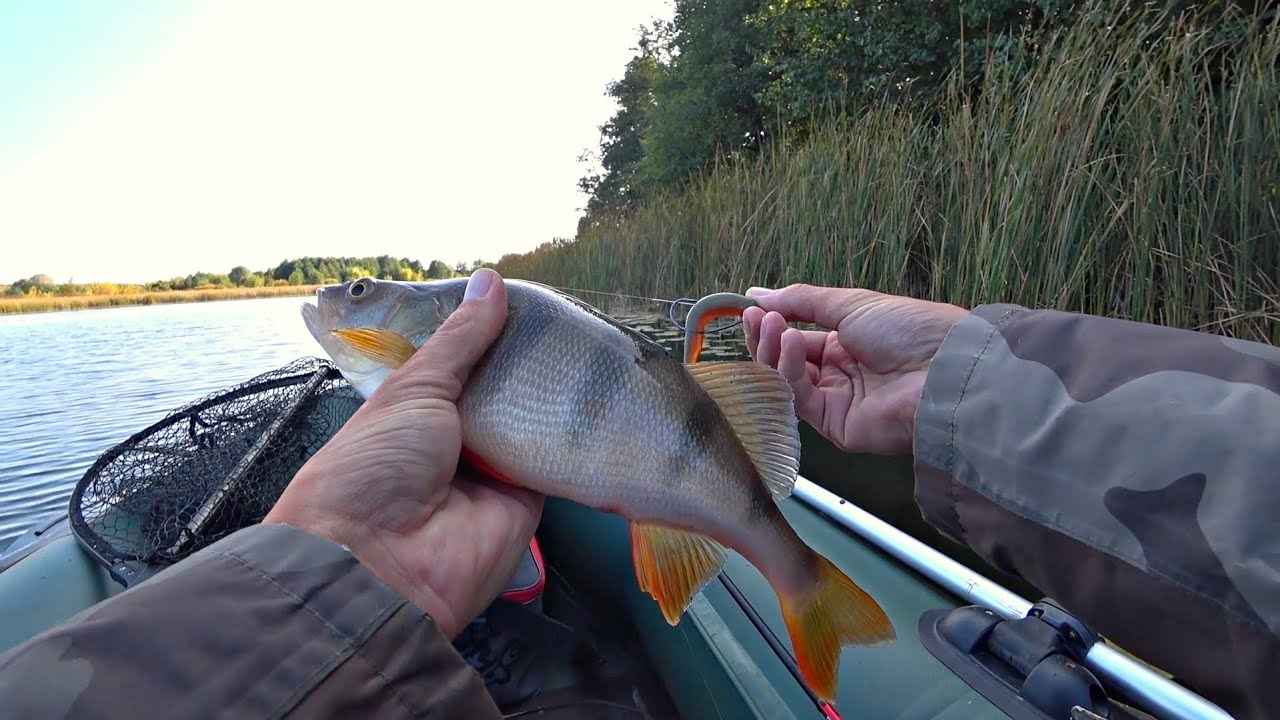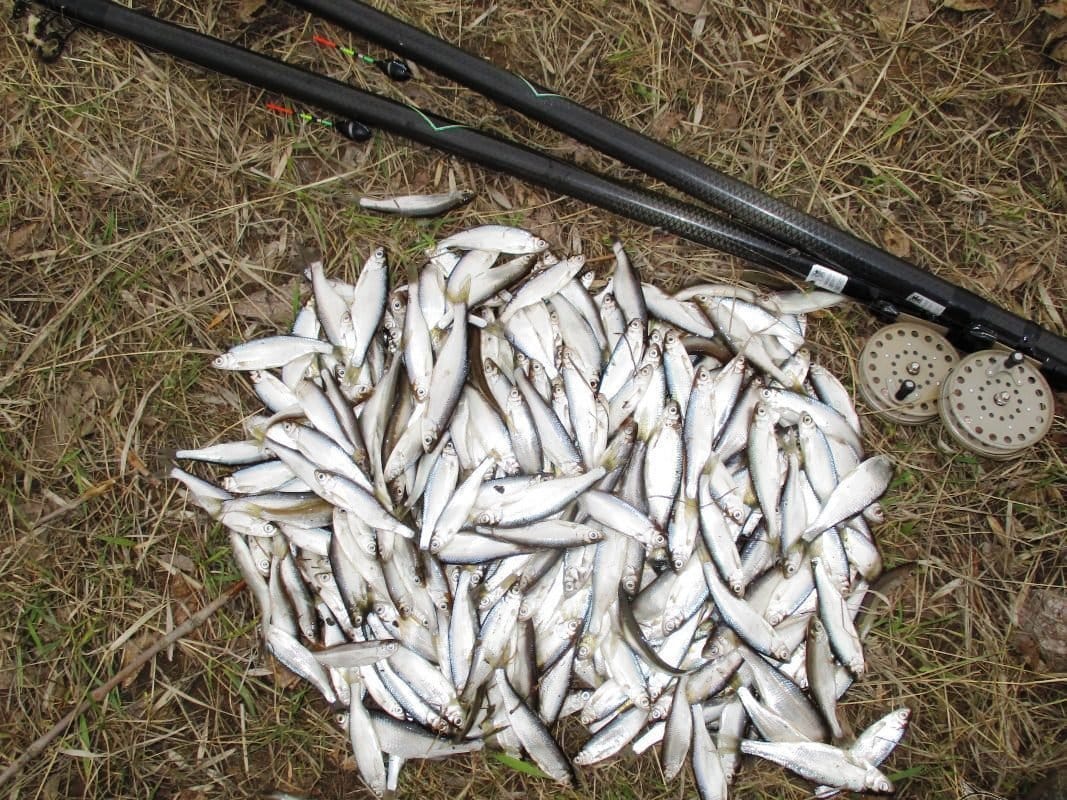Chekhon (lat.Pelecus cultratus) is a freshwater resident or semi-anadromous fish that mainly lives and moves in schools. It belongs to the carp family. Most often, such fish is eaten salted or dried. It is also often smoked. Recently, the fish population has significantly decreased, therefore, it is prohibited to fish in many regions.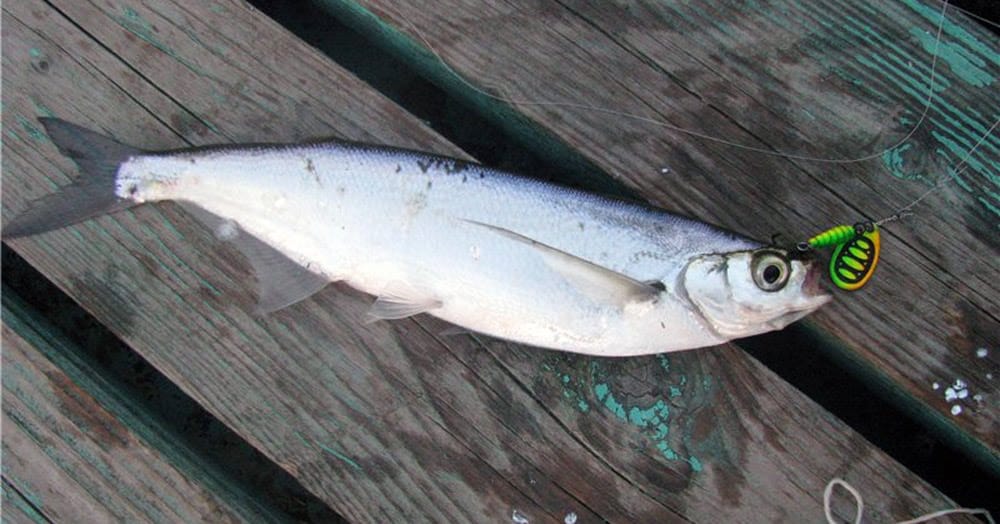
- General description of sabrefish fish: structural features and photos
- Classification
- The difference between sabrefish and similar fish
- Where is the sabrefish fish found in Russia
- Habits and lifestyle
- Spawning
- Features of nutrition and diet
- How, where and what to catch sabrefish
- Where to find fish
- Used baits and tackle
- Catching sabrefish in winter for a garland on the current
- What baits are used
- Taste qualities
- Benefits and harms, calorie content
- Recipes for cooking sabrefish: video selection
- Поделиться ссылкой:
General description of sabrefish fish: structural features and photos
This fish is often called a saber or cleaver. Sometimes sabrefish is also called Czech or herring. The fish has a body compressed on the sides. Moreover, it is quite long. The sabrefish is characterized by a convex belly with a solid keel. There are no scales on it. The mouth is small. The head is also medium-sized and has high-set eyes. The body is covered with silvery scales. At the same time, grayish and yellow shades are characteristic of the caudal and dorsal fins. The maximum weight of the fish is 2 kg, and the length reaches 60 cm. Chekhon lives for 9 years. But in reservoirs, this period increases to 12-13 years. On average, a Czech woman is caught weighing 300-400 g. The length of such specimens is 30-40 cm.
Classification
There are sedentary and semi-anadromous varieties of sabrefish. They are almost indistinguishable. At the same time, semi-anadromous fish is characterized by faster growth. Sedentary representatives of the ichthyofauna live all their lives in one fresh water body. Semi-anadromous fish live in salt water. Therefore, they are found in the Aral and Caspian Seas. Fishing fans appreciate the Azov and Caspian varieties. The Don sabrefish is characterized by more impressive sizes and fatty meat. The Volga variety is smaller and leaner.
The difference between sabrefish and similar fish
In appearance, sabrefish is similar to bleak or herring. But upon closer examination of the fish, it is possible to see the difference in proportions, shape and shades. In this case, the obvious differences are in the form of herring or bleak. There are very long fins on the chest of the fish. When playing, sabrefish spreads them apart, resembling a flying fish. The dorsal fin is small and short, and the ventral fin is long. Another distinctive feature is the beveled head. The mouth is directed upward, which makes it easier to collect food from the water surface.
Where is the sabrefish fish found in Russia
Fish are found in the seas and freshwater bodies, which have many differences. Good osmoregulation is characteristic of sabrefish. Due to this, it quickly adapts to the effects of the increased hydrostatic pressure that is observed in the sea. At the same time, water-salt metabolism is normalized in fish. Thanks to the launch of a special biosystem, it is possible to adapt the kidneys, gills and intestines to remove excess electrolytes. In Russia, fish is found in the basins of different seas – the Azov, Black, Caspian, Baltic. Also sabrefish lives in various lakes and rivers.
typical for the waters of central Russia and the CIS countries [/ caption]
Habits and lifestyle
It is a valuable semi-anadromous fish. She prefers to lead a gregarious lifestyle. The sabrefish spends most of the time in the estuarine zones, which are rich in food. Sedentary marine or riverine species are also found. They are practically no different. The only exceptions are growth rates and back color. Regardless of the variety, sabrefish chooses only fresh water bodies for spawning. Often she has to go upstream for many hundreds of kilometers. The live silver saber is often found in medium to large bodies of water with a lot of dense vegetation. In most cases, fish live in rivers, lakes, reservoirs, which have a heterogeneous topography and many pits at the bottom. The maximum activity occurs during the daytime. The fish behaves rather cautiously. She rarely goes into shallow water.If you deliver food to the flock’s habitat, you can expect a good and greedy bite.
Spawning
Sexual maturation of females occurs at 2-3 years of age. In males, it occurs earlier – in 1-2 years. At one time, the female lays up to 70 thousand eggs. Before breeding, the fish form schools and make long transitions. The process itself begins as the water warms up to + 15-20 degrees. At the same time, sabrefish can spawn in a river bed or on shallow rifts.
Interesting to know! Breeding areas are usually covered with sparse bushes or dense vegetation of aquatic plants. At the same time, sabrefish lays eggs at a depth of no more than 1 m.
The caviar of this fish is characterized by a non-sticky shell. It swells quite strongly, due to which the buoyancy increases. During this period, the embryos develop. After spawning, the sabrefish returns to the reservoir.
Features of nutrition and diet
The diet of sabrefish is influenced by various factors – the age of the fish, habitat, size. Young individuals eat plankton. They also consume worms, larvae, crustaceans. The diet of adult fish contains large insects, aquatic donkeys, and mosquitoes. They can also eat fry of other fish – top –
melting , bleak, crucian carp, roach.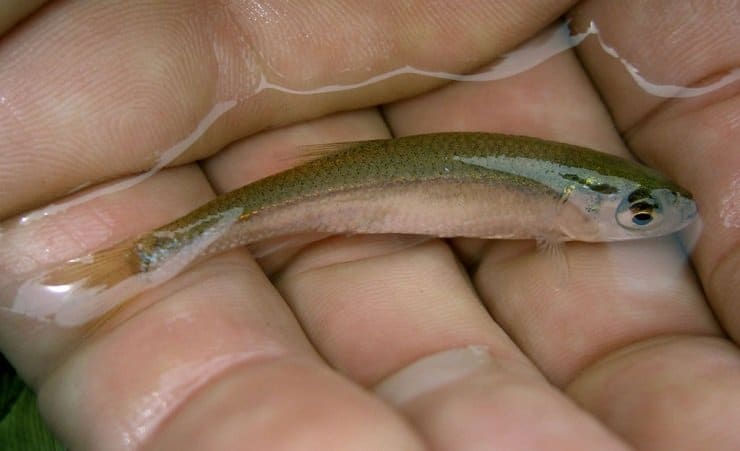
How, where and what to catch sabrefish
To catch sabrefish, it is recommended to take into account a number of features. In this case, it is necessary to choose the right gear.
Where to find fish
Chekhon is found in the seas, freshwater rivers, lakes and reservoirs. Most often, fish live in wide areas of water bodies. At night, schools of fish lie at the bottom, and during the day they go in search of food. In spring and autumn, large flocks of sabrefish accumulate, which are going to migrate. It is this time that is best suited for industrial fishing. With the arrival of cold weather, the fish seeks shelter at the bottom of reservoirs to wait out the frosts. At the same time, you should not count on an active bite.
Used baits and tackle
The fish takes an interest in anything that falls into the water. However, it will not bite on any bait. In the spring, the best options are dung worms, maggots, bloodworms. In summer, you can use large flies, wasps, grasshoppers. It is permissible to catch large sabrefish on small fish no more than 4 cm in size. It is permissible to catch large sabrefish with artificial lures, especially spinning fishing during the spring move. These include:
- wobblers;
- vibrotails;
- flies;
- twisters.
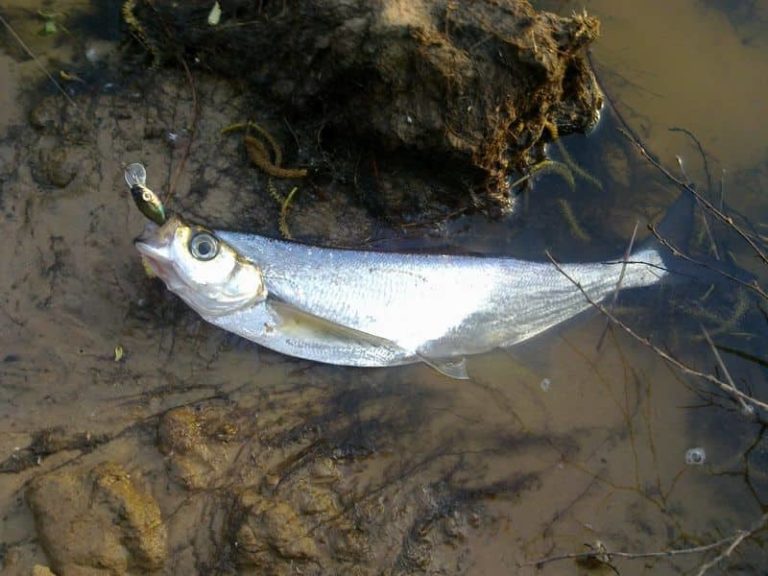
- Spinning – for fishing, artificial baits are used – microblossy and microvoblers. The sbirulino method is also a good option.
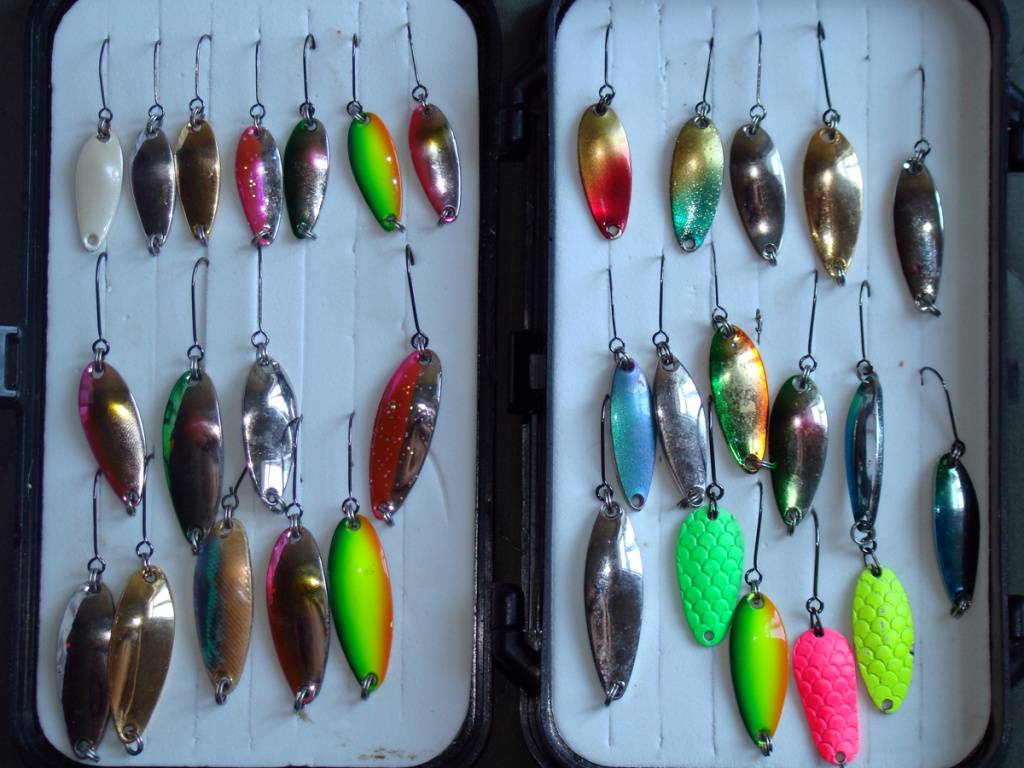
- Fishing with a line – in order to achieve long-range casting, it is worth using match or Bolognese fishing rods.
- Feeder or donka – with their help you can catch sabrefish on shallows and on rifts at long distances.
- Elastic band – this tackle is equipped with a large number of hooks. With its help, it is possible to catch up to 5 fish at a time during zhora.
https://youtu.be/x7-TmJew6NQ To fish for sabrefish to be successful, you can use the float tackle. When choosing a rod, it is worth considering the features of the reservoir:
- If long distance casting is required, it is worth using a match tackle.
- If your fishing point is near the shore, an affordable fly rod will do.
- For bodies of water with a current, it is worth using a Bolognese rod.
- When space is limited, a plug-in fishing rod is a good option.
A large sabrefish should be caught with a spinning rod. First of all, you need to choose the optimal rod. Since small lures are used for fishing, light and ultra-light spinning rods are suitable
. The length is determined by the size of the reservoir. For long casts, 2.4-3 meter rods are suitable. On smaller rivers, it is sufficient to use shorter blanks, the same can be said for fishing from a boat. Until October, it is permissible to catch sabrefish with fly tackle. This method involves the use of surface baits that resemble insects and specific wiring techniques. https://youtu.be/HEmit0PDSQ4
Catching sabrefish in winter for a garland on the current
In winter, it is worth using a garland with a sinker located at the end of the line. Above it, you need to tie hooks 4-5 numbers. Instead of them, it is permissible to use jigs. The best bait options include dung worms. Maggots are also great. The fishing technique in this case is simple. In this case, you need to immerse the garland in water and wait for a bite.
What baits are used
For successful fishing with float and feeder tackle, sabrefish should be fed. This is done with a small amount of feed, tossing it in from time to time. Thanks to this, it will be possible to keep the fish in one point. For feeder fishing, it is worth adding substances with loosening properties to the mixture – for example, coconut flakes. Any basic composition is used as a basis. In this case, a small amount of bait is required to be added to the finished bait, on which the angling is performed. You can make groundbait with your own hands. To do this, you should use the following recipes:
- Take 1 kg of millet, boil and cool. Add 800 g of compound feed and 200 g of bread crumbs. Put 100 g of maggots in the composition.
- Boil 150 grams of peas, add 80 grams of makuha and a handful of wheat groats. Leave to swell. Add maggots to the mixture, make balls and throw them into the catch area.
- Mix the finished groundbait with rye bread crumbs and sift through a sieve. For fishing in muddy waters, you can purchase a dyed bait.
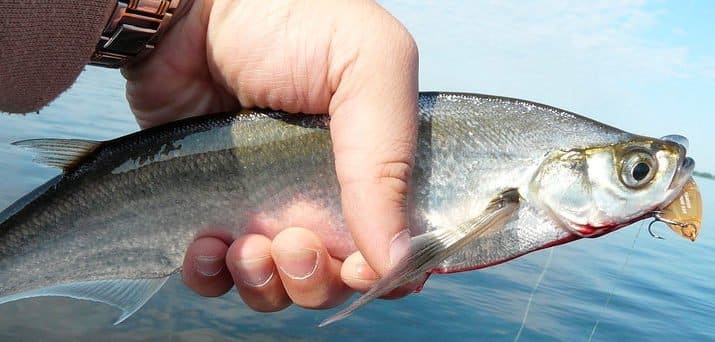
Taste qualities
Despite the abundance of small bones, sabrefish is a valuable fish that has a high commercial value. It is usually consumed salted or dried. Also, the fish is often smoked. Its meat is high in fat. This is especially pronounced in the fall.
Benefits and harms, calorie content
Chekhon is a dietary fish. The calorie content of 100 g of the product is literally 88 kcal. In addition, fish contains a lot of proteins, which are sources of valuable amino acids. Therefore, it is extremely nutritious. The sabrefish meat contains a lot of phosphorus and calcium, which help to strengthen the teeth. It also contains a lot of zinc, which is important for the human body. With a deficiency of this substance, there is a risk of developing impotence in men, since there is insufficient testosterone production. The sabrefish contains many B vitamins. They are required for the normal functioning of the nervous system. Vitamin PP is also present in fish. This component strengthens the walls of blood vessels, prevents the appearance of atherosclerosis, and has anti-cancer properties. There are no specific contraindications for eating fish.Sometimes it provokes allergies associated with individual intolerance.
With great care, such fish should be given to young children, since it contains many small bones.
It is not recommended to eat salted or dried fish with pathologies of the kidneys, heart and blood vessels. These foods contain a lot of salt, which puts more stress on the affected organs. They are also capable of provoking the appearance of puffiness.
You should not eat sabrefish after insufficient heat treatment or poor-quality salting. In this case, there is a risk of infection with parasites.
Recipes for cooking sabrefish: video selection
This fish is very popular in Russia. It is prepared in a variety of ways. Chekhon can be used to make fish soup or other soups. It is also permissible to stew fish, fry, bake. The optimal side dishes for it are pasta, potatoes, vegetables. Cured sabrefish is distinguished by good taste. It is one of the best beer snacks. Before drying, the fish is slightly salted. This is done right with the scales. Dried sabre at home: https://youtu.be/onaUGZg5Jy8 How to salt sabre: https://youtu.be/j41d_DC7KVo How to cook boneless sabre – a detailed recipe: https://youtu.be/xml1_L6JKDg Chekhon is quite common fish that has excellent taste. To catch it, you need to choose the right tackle and fishing spot.

